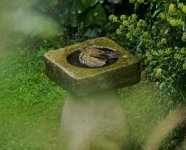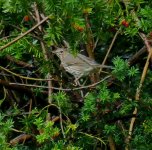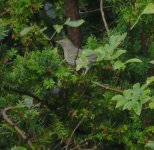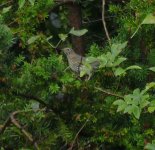KenM
Well-known member
Several Redwing arrived on the 28th Sep.in my neighbour's garden feeding on the prolific Yew Berries, whether a co-incidence or not, a couple of ''grey Song Thrushes (1st Winters) arrived at the same time, I've not seen such striking examples before! Presume one can only speculate as to their origins?
Image 1. shows a typical garden Song Thrush....as for the rest :eek!:
Cheers
Image 1. shows a typical garden Song Thrush....as for the rest :eek!:
Cheers









